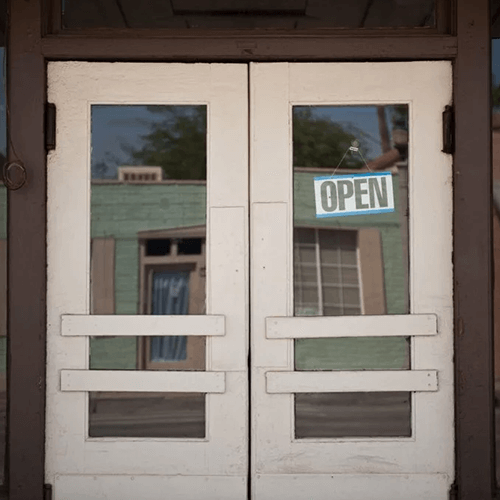
One of the easiest ways to improve the look of your commercial building is by having your outdated storefront doors replaced. Many places attempt installing your own storefront doors, but this is one job that should be left to an experienced professional.
Installing your own commercial doors creates a lot of room for error, as it’s easy to make mistakes when you’re unsure of what you're doing. As such, installing your own storefront doors comes with real structural and financial risks.
A primary reason many people fail when installing their own storefront doors is that they underestimate the complexity of the project.
You must plan and measure before attempting to install any door. Measuring your existing door once is good, but measuring it a second time will ensure your dimensions are correct.
Installing a storefront door requires accurate measurements and strong procedural know-how. If these elements aren’t in place, you could end up wasting time and money.
Making your storefront door installation a DIY project comes with several risks, including the following complications.
If your door frame isn’t vertical and square, you could encounter numerous problems when installing the door. For example, your edges may not line up, leading to insecure attachments. You can prevent this by confirming that the frame is in line with the surrounding elements.
When you hold the door in position before securing it, pay attention to the gaps around the frame and header. They should be a consistent width the entire way around the entrance. If they’re not, something is off.
All storefront doors are designed to be used with specific hardware, including anchor bolts that attach it and its threshold to the lower frame and door. You must use the hardware listed in your door’s installation instructions. Using the wrong hardware may result in a shifting door threshold or poorly aligned door.
In addition to ensuring that your door opens and closes the way it’s supposed to, you must consider the orientation of all hardware, including:
Pay close attention to which side of the door the lock goes on and which way the door handles face. Otherwise, you might end up with inoperable hardware and have to start over from the beginning.
Every door, regardless of design, comes with a swing component that must open and close to allow customers to enter your business. Many business owners perform DIY installations incorrectly because they don't know to guarantee that their doors have the right opening and closing arc.
This arc must match the building design to ensure a proper flow of traffic. Misjudging the swing could lead to two or more colliding doors or cause certain areas to become inaccessible. As such, you should consider the direction of swing during planning and installation to make sure your door opens and closes the way it’s supposed to.
If you're replacing one set of doors with another, you may decide to put in a smaller size to save money. However, it’s imperative that your doors satisfy the regulatory standards governing business entryways.
Compliance is a crucial aspect of installing any commercial door, as your property must be accessible to visitors with disabilities or movement limitations.
You must ensure that your storefront door meets all relevant ADA regulations, including entrance width. Storefront doors in particular must be able to accommodate wheelchair users, often necessitating a permanent wheelchair ramp. When you install your storefront door on your own, you risk being out of compliance with these standards.
Installing a storefront door might not seem like a particularly difficult job, but without the proper experience, you put everyone involved at risk of injury. Professionals use their extensive training to ensure safe and successful installation.
If you, one of your employees, or a customer becomes injured due to an improperly installed storefront door, your medical bills will likely be higher than the cost of a professional installation, which is yet another reason to work with a professional installer.
Don’t put your business or employees at risk by taking a chance installing your storefront doors yourself. Get help from CDF Distributors.
Contact us today to learn more about our professional installation process.